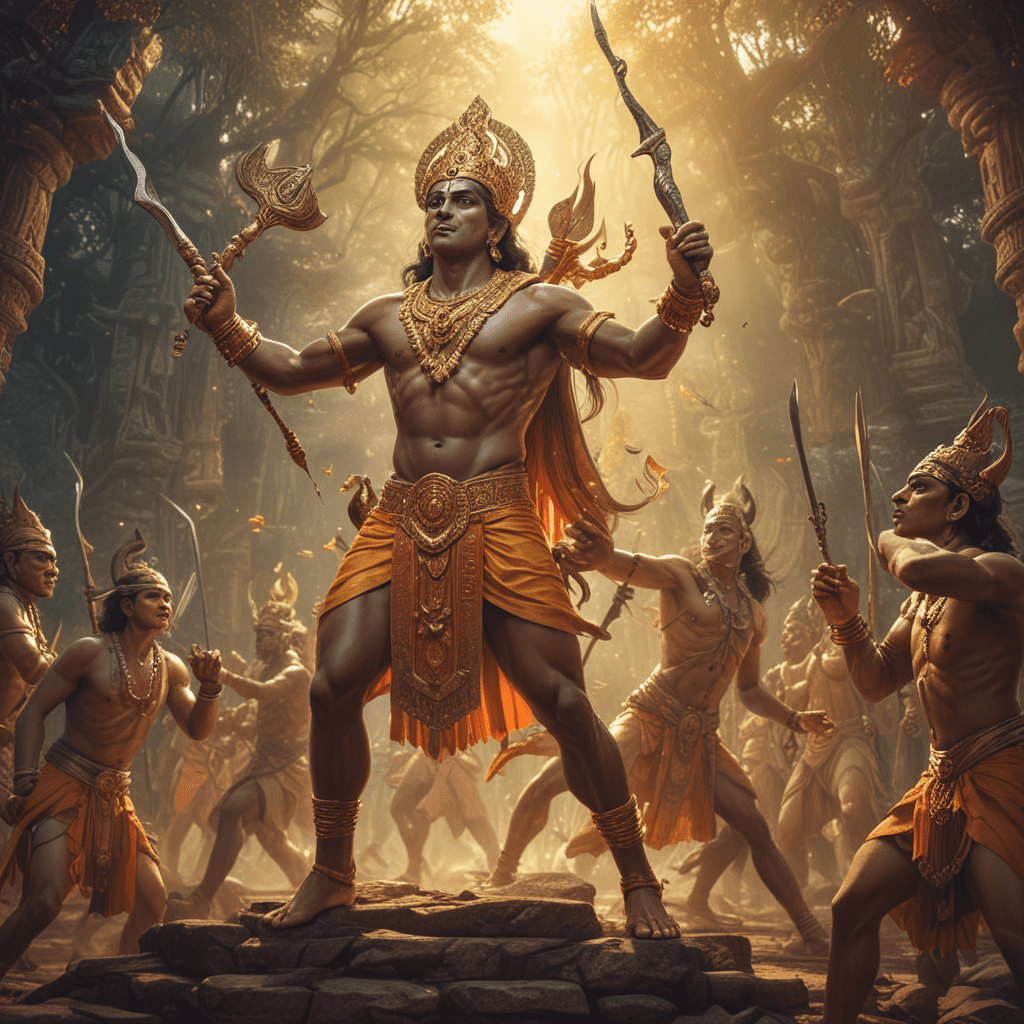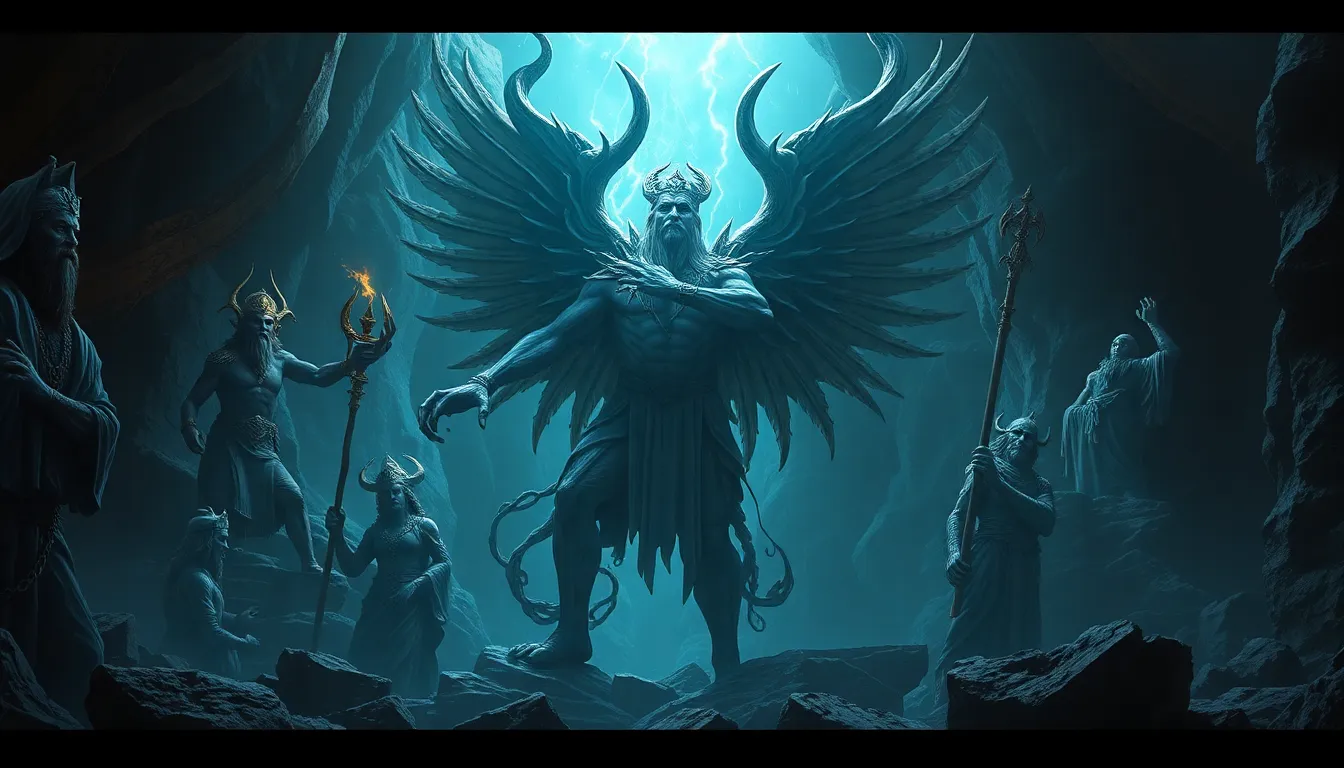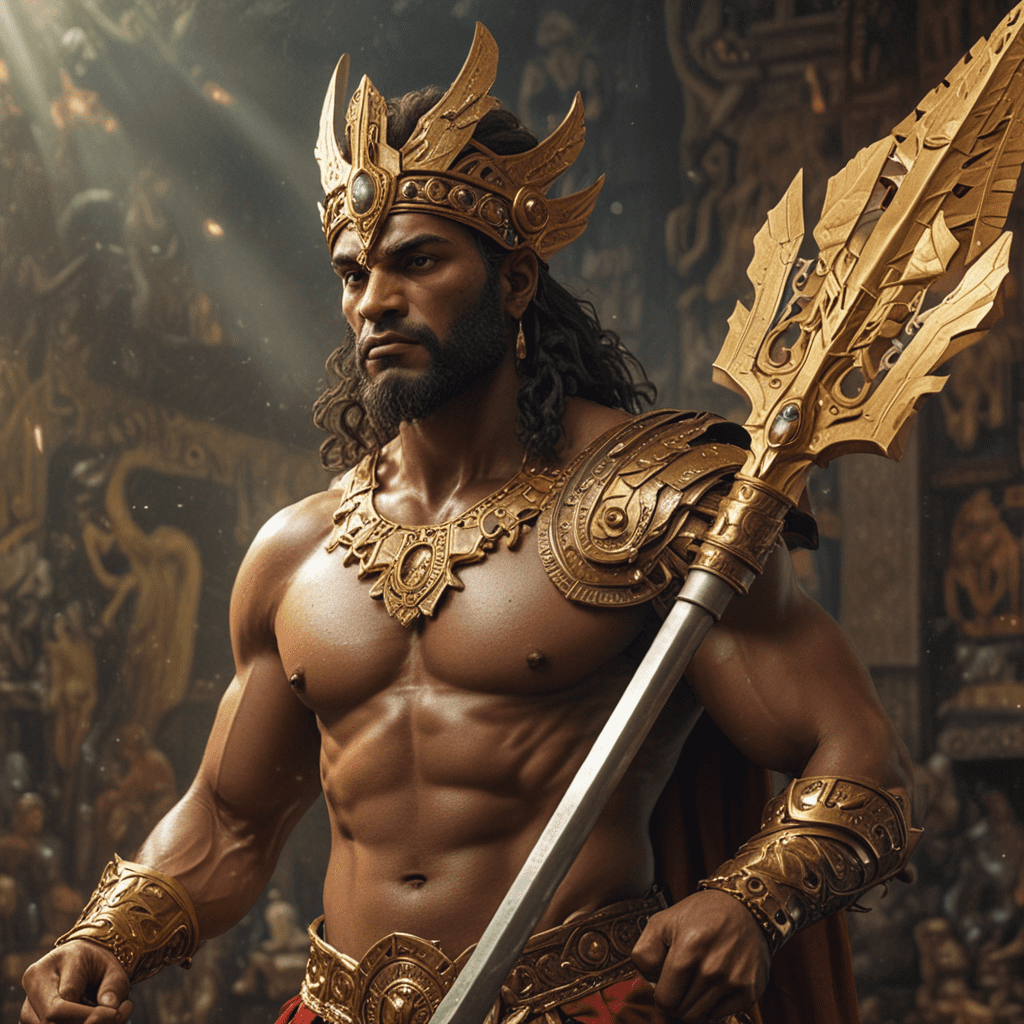Exploring the Epic of Ramayana in Indian Mythology
I. Introduction
The Ramayana, an epic Sanskrit poem, stands as a revered cornerstone of Indian mythology. Its profound narratives have deeply influenced Indian culture, religion, and literature for millennia, shaping the moral and spiritual values that underpin society. This sacred text, attributed to the sage Valmiki, unravels a timeless tale of duty, love, and the triumph of good over evil.
II. Origin and Historical Background
The Ramayana's origins can be traced to ancient Vedic texts, where its central characters, such as Rama and Ravana, find mention. However, its most renowned rendition emerged during the 3rd to 4th centuries BCE. Historians believe that the epic's composition reflected the social and cultural milieu of the period, drawing upon prevalent societal values and belief systems. The Ramayana, therefore, serves as a valuable lens through which to examine India's ancient history and traditions.
III. Characters and Their Roles
The Ramayana features a vibrant cast of characters, each embodying distinct virtues and flaws. At the heart of the epic lies Prince Rama, an avatar of Lord Vishnu and a symbol of righteousness. His unwavering devotion to his wife Sita and his sense of duty form the epic's central theme. Sita, the epitome of purity and loyalty, endures numerous trials and tribulations with grace and resilience. The antagonist of the epic is Ravana, the demon king of Lanka, who exemplifies tyranny and evil.
IV. The Journey to Lanka
The epic unfolds with Rama's exile from his kingdom by his stepmother. Accompanied by his wife Sita and brother Lakshmana, Rama ventures into the forest, where they encounter various challenges and adventures. The journey becomes a quest for personal growth and a trial of their unwavering devotion to one another. Along the way, they encounter Hanuman, the devoted monkey god, who plays a crucial role in the ensuing events.
V. The Battle for Lanka
The epic climaxes with Rama's quest to rescue Sita, who has been abducted by Ravana. Assembling an army of monkeys and bears, Rama confronts Ravana's formidable forces in a cataclysmic battle. The war becomes a clash of titans, where the forces of good and evil engage in a relentless struggle. Rama's strategic brilliance and the unwavering support of his allies ultimately lead to Ravana's defeat, restoring justice and order to the world.
VI. The Rescue of Sita
With Ravana vanquished, Rama rushes to Sita's side, who has been imprisoned in the demon king's palace. Overwhelmed with joy, Rama finds Sita amidst a whirlwind of emotions, having endured unimaginable trials during her captivity. Their reunion marks a triumph of love and fidelity over adversity.
VII. The Return to Ayodhya
Rama's victorious return to his kingdom of Ayodhya is met with jubilation and fanfare. The people, who had yearned for their beloved prince's return, welcome him with open arms. Rama's coronation as king signifies the restoration of righteousness and the beginning of a new era of peace and prosperity.
VIII. The Legacy of Ramayana
The Ramayana has transcended its literary status to become an integral part of Indian culture and heritage. Its timeless themes and enduring characters have been reimagined and adapted into countless works of art, literature, music, and dance. The epic's profound influence extends beyond India, inspiring literary and artistic traditions in Southeast Asia and beyond.
IX. Cultural Significance in Indian Mythology
Within Indian mythology, the Ramayana holds a pivotal position. It is revered as a sacred text, providing moral and ethical guidance to countless generations. The epic's characters serve as role models, embodying virtues such as courage, loyalty, and self-sacrifice. Its teachings continue to shape religious practices, festivals, and rituals, deeply interwoven with the fabric of Indian life.
X. Conclusion
The Ramayana stands as a majestic testament to the power of storytelling, capturing the essence of human experiences and aspirations. Its timeless narratives continue to resonate with audiences worldwide, transcending cultural and linguistic boundaries. The epic's enduring legacy lies in its profound insights into the nature of good and evil, the strength of love and duty, and the enduring human spirit.
FAQ
1. Who is the author of the Ramayana?
- The Ramayana is attributed to the sage Valmiki.
2. What is the central theme of the Ramayana?
- The Ramayana's central theme revolves around duty, love, and the triumph of good over evil.
3. Who is the protagonist of the Ramayana?
- Prince Rama is the protagonist of the Ramayana.
4. Who is the antagonist of the Ramayana?
- Ravana, the demon king of Lanka, is the antagonist of the Ramayana.
5. What is the significance of the Ramayana in Indian culture?
- The Ramayana is an integral part of Indian culture and heritage, influencing art, literature, music, dance, and religious practices.



